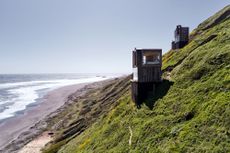Elephant World wins Best Sanctuary: Wallpaper* Design Awards 2021
Including exhibition space set amid courtyards and pools, the Elephant World's architecture nods to both human and elephant needs; all, to a design by Boonserm Premthada's Bangkok Project Studio in Thailand

The work of Thai architect Boonserm Premthada walks the tightrope between a sharp, contemporary aesthetic and an intensely site-specific outlook rooted in tradition. One of his newest projects, a home for both people and elephants in the Surin province of lower north-eastern Thailand, demonstrates how.
Elephant World was created to support the Kui, the region’s ethnic people, and their beloved pachyderms. The Kui have been elephant keepers for centuries, considering the noble animals family members, and living with them side by side. However, in recent years, Thailand’s economic boom and urbanisation have threatened their way of life. Many have been displaced, their 400-year-old village falling into poverty and disrepair, endangering people and animals.
The corridors are elephantsized to cater to the animals, and the outdoor parts are interspersed with ponds that highlight the need for clean water for this endangered community’s survival.
The local government looked at ways to arrest that decline and create suitable and sustainable living conditions for elephants and humans. Premthada, and his architecture firm Bangkok Project Studio, won the commission and work began in 2015. ‘The architecture performs three functions,’ says the architect. ‘Preserving the culture; reviving the forest to ensure a supply of food and herbal medicines for elephants and providing a water source; and building a self-sufficient community economy through sustainable tourism that respects elephants and the Kui way of life.’
The design consists of three main parts: an observation tower, a museum, and what the architect calls the ‘cultural courtyard’, a 70m x 100m sloping roof, beneath and around which cultural events and religious ceremonies take place. (The wider complex also includes the historic Kui village, a field, temples and graveyards, but these were not designed by Premthada.)
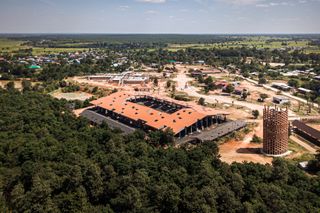
The observation tower is located on the edge of the site, next to a forest. It was built from bricks made locally using earth from the construction of a new reservoir, dug to serve the 200 elephants in the compound (collectively, the animals require about 800,000 litres of water per month). Built for visitors to climb and take in the scenery, and observe the relationship between people and elephants below, the tower is also used as a platform from which to disperse seeds of the local Apitong trees, helping to renew the forest.
By contrast, the museum is a low building, composed of open-air corridors, enclosed galleries and spaces such as a library. Undulating roofs and wall edges create peaks and valleys that appear to spring out of the earth. The bricks used for the museum were created on site by local workers using loam found in the area. The presence of elephants is palpable throughout, and not only in the exhibits, which include stories that speak to the community’s heritage as well as the value of coexistence between people and nature. The corridors are elephantsized to cater to the animals, and the outdoor parts are interspersed with ponds that highlight the need for clean water for this endangered community’s survival.
‘To me, the museum is not just a single building,’ says Premthada. ‘It is all the buildings in the project, the village which has been there for 300 to 400 years, the trees and the existing landscape. And the stories in my museum are told by the local people.’
The hope, says Premthada, is for the forest to grow and take over much of the site, engulfing it in greenery, and making this a project that is at one with nature – a relationship as organic and effortless as the one between the Kui and the elephants. ‘Animals can transform a city, bring hope and pride to humans,’ he adds. ‘Humanity isn’t just about human relationships. We address our humanity through our relationships with other living creatures on the planet. The respect, or contempt, we show animals reflects our values as a human race.’
RELATED STORY
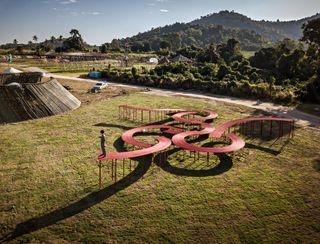

Elephant Museum
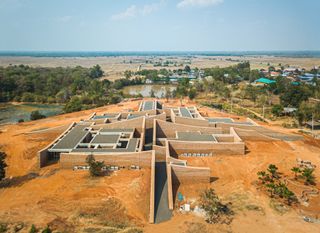
Elephant Museum
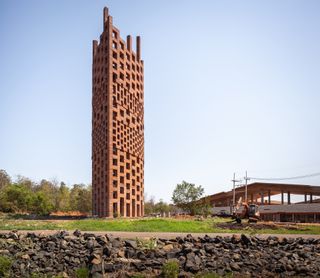
Brick Observation Tower

Elephant Museum
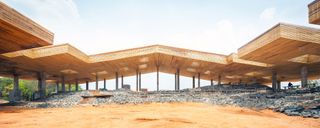
The Cultural Courtyard
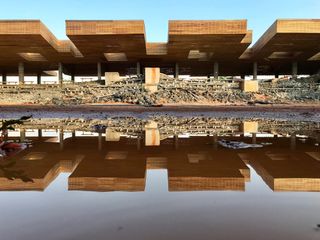
The Cultural Courtyard water
INFORMATION
Wallpaper* Newsletter
Receive our daily digest of inspiration, escapism and design stories from around the world direct to your inbox
Ellie Stathaki is the Architecture & Environment Director at Wallpaper*. She trained as an architect at the Aristotle University of Thessaloniki in Greece and studied architectural history at the Bartlett in London. Now an established journalist, she has been a member of the Wallpaper* team since 2006, visiting buildings across the globe and interviewing leading architects such as Tadao Ando and Rem Koolhaas. Ellie has also taken part in judging panels, moderated events, curated shows and contributed in books, such as The Contemporary House (Thames & Hudson, 2018), Glenn Sestig Architecture Diary (2020) and House London (2022).
-
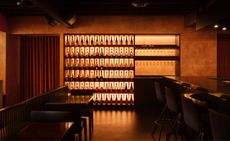 Ama Bar, in Vancouver, is sexy and a little disorienting
Ama Bar, in Vancouver, is sexy and a little disorientingAma Bar features ‘Blade Runner 2049’-inspired interiors by &Daughters
By Sofia de la Cruz Published
-
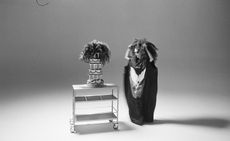 Kembra Pfahler revisits ‘The Manual of Action’ for CIRCA
Kembra Pfahler revisits ‘The Manual of Action’ for CIRCAArtist Kembra Pfahler will lead a series of classes in person and online, with a short film streamed from Piccadilly Circus in London, as well as in Berlin, Milan and Seoul, over three months until 30 June 2024
By Zoe Whitfield Published
-
 Monospinal is a Japanese gaming company’s HQ inspired by its product’s world
Monospinal is a Japanese gaming company’s HQ inspired by its product’s worldA Japanese design studio fulfils its quest to take Monospinal, the Tokyo HQ of a video game developer, to the next level
By Ellie Stathaki Published
